
What is Content Marketing, Really?
I’ve been around the world, to marketing conferences, to large brand marketing team meetings, and I’ve spoken to hundreds of marketers who think marketing with content is the same thing as content marketing.
In this post, I’m going to give you the definition, the reason why many leading companies use it to drive 6x more ROI from their marketing while spending 62% less. And why you should start using it right away!
So what is content marketing really?
Content marketing is the process of consistently publishing relevant content that audiences want to consume in order to reach, engage, and convert new customers. It involves brands acting more like publishers and creating content on a destination you own (your website) that attracts visitors.
Content marketing is not the same thing as marketing with content. It is customer-focused, answering important customer questions and meeting their needs and challenges.
Content marketing creates a financial asset. It allows businesses to reach, engage, and convert customers they would have never seen by using the keywords customers use and creating the content they consume on your own website to answer those questions.
Content marketing represents the gap between what we produce as brands and what our audience is looking for. It leads to quantifiable business value.
Quick Takeaways:
- Content marketing is an opportunity to reach and convert new customers.
- Content marketing drives measurable results and ROI over more traditional marketing tactics.
- Content marketing allows you to build relationships that enhances brand trust.
- Content marketing focuses an organization on telling brand stories that resonate with customers.
🔥 PS – I put together these 10 tips for optimizing your content marketing. Watch Now!
What Is Content Marketing Really?
Content marketing, when you peel away all the layers of techniques, trends, and possibilities, is a business opportunity. Because it’s a tool they can use for growth. As businesses struggle to achieve growth in a challenging business environment, we’re seeing more interest and budget shifting to content marketing as the best choice for marketing budgets.
That makes it really different than advertising (more on that in a bit).
What makes content marketing different than other types of marketing is in the ROI and business value it delivers over time.
Content marketing allows any business to increase their presence in organic search because it focuses on sharing thought leadership. By using SEO and content insights as critical components, content marketing is increasingly more and more aligned with customer needs.
However, for content marketing to work, it must be well-executed. That includes developing a content strategy.
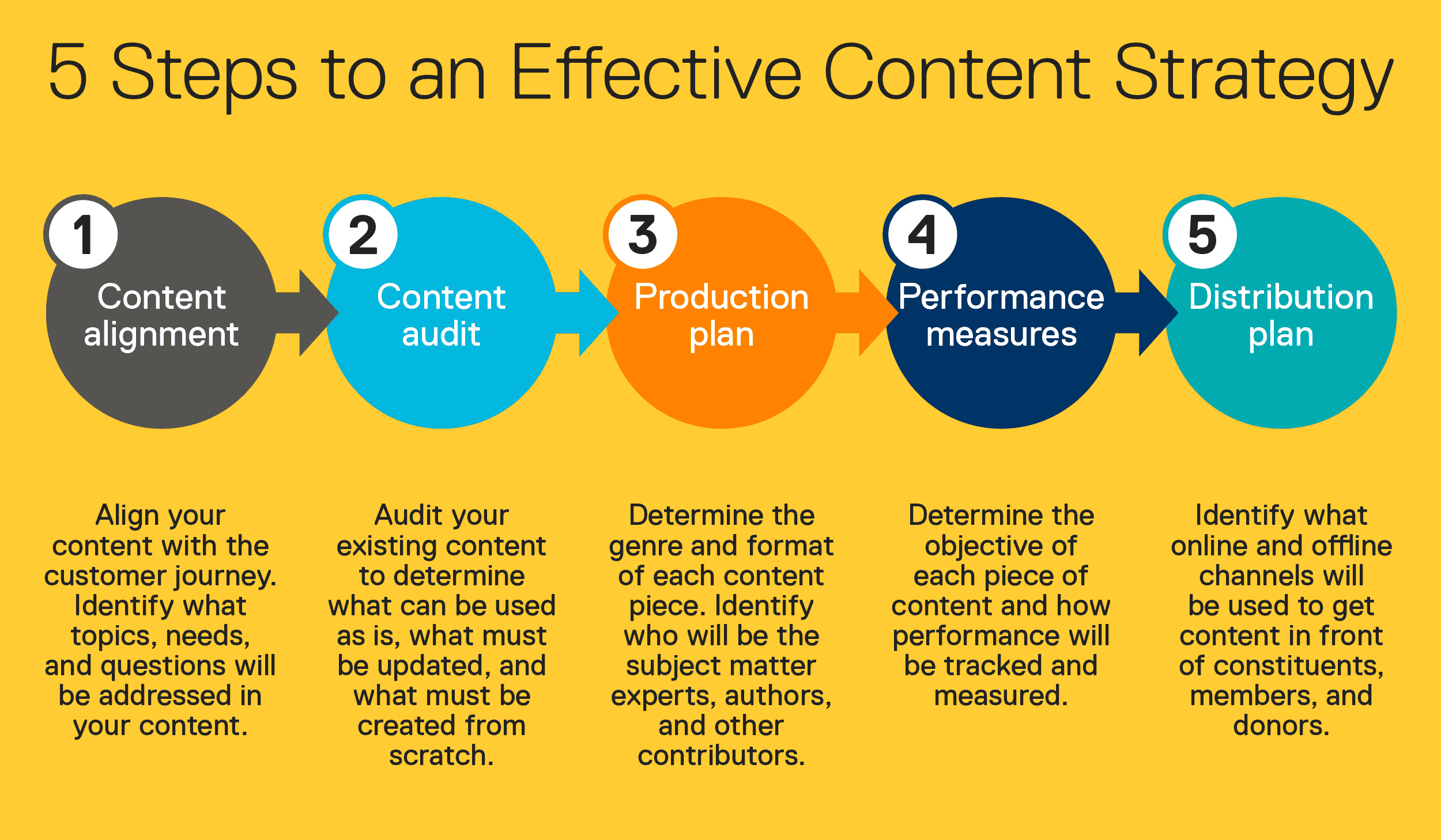
Successful content marketers align themselves to a content calendar – 12 months of content ideas based on data. Then that plan is executed and optimized on a regular basis
For many companies, content is randomly published based on requests from executives. These random acts of content do not support strategic goals and often produce little in the form of business results.
The Business Advantage of Good Content Marketing
Unlike other approaches, there is something special that makes content marketing stand out as the best of modern marketing methods: It’s sustainable.
When done well – with a strategy behind it and relevancy within each piece – it offers the benefit of exponential growth, building brand awareness and trust, winning over prospects and convincing leads, and endearing your customers, helping to build a loyal base of brand advocates.
Once you get your content marketing strategy going, it’s that positive snowball effect in action. Your brand presence gets bigger and more impactful. It becomes easier to achieve your marketing goals with future content because you already have a foundation in place – a vast content library of written, visual, and experiential content, all designed to resonate with your target buyers.
This is in contrast to traditional marketing. Advertising, even with today’s sophisticated digital ads, can create overexposure. Audiences become saturated with brand promotion that offers no genuine value to the people you’re trying to build customer relationships with.
🚀 PS – Check out our weekly blog content service to grow your website traffic and leads!
Content Resonates, Advertising Saturates
A critical factor in your content marketing is relevance. What are your customer’s challenges, pain points, and needs? That’s what you should be writing about, not producing a commercial for your brand. Well-written, insightful content draws your audience in and sets you up as a thought leader.
On the contrary, advertising, even digital ads, leads to overexposure and saturation. You haven’t attempted to build a relationship with your audience. Instead, you’ve only captured a story about your brand as the star with no room for the real hero, your customer.
To sum it up, as I said a few years ago, the right content is “a vehicle that can deliver us from the throes of the ‘death by SPAM’ illness that still persists in many marketing organizations.”
The Impact of Content Marketing on Business
So, you may still be wondering, why content marketing? Isn’t it just throwing up a blog every now and then? How do you know content marketing has real ROI (return on investment)?
It’s normal to have apprehension about investing in something that seems hypothetical in nature. But the stats don’t lie. Consider these impressive numbers:
- Web traffic growth: Companies that blog have, on average, 434 percent more indexed pages than those that do not. More content equates to more traffic, and content marketers have seen 7.8 times higher year-over-year growth in unique site traffic. (Source: Aberdeen)
- Leaner budget but bigger results: Content marketing garners three times more leads than paid search advertising. Additionally, it costs 62 percent less to execute content marketing versus any other type of campaign. (Source: Demand Metric)
- Higher conversion rates: Brands that use content marketing can expect 6 times higher conversion rates. (Source: Aberdeen)
- More chances for your brand to get in front of the right eyes: 47 percent of internet users read blogs daily. (Source: Statista)
- Buyers crave content in the decision-making process: 80 percent of business owners and executives prefer to learn about brands through articles rather than ads. 41 percent of B2B buyers consume three to five pieces of content before talking to sales. (Source: Demand Gen Report)
- Thought leadership: Developing a credible library of content that signals your authority and expertise draws in decision-makers. In fact, 60 percent of buyers said thought leadership convinced them to purchase a product or service they had never considered previously. (Source: Edelman-LinkedIn)
The numbers don’t lie. This is but a short collection of what you can expect when you put momentum behind your content marketing. You can realize these benefits and more. However, you have to start with a strategy, discerning what content marketing means to your business and how you’ll go about being intentional with what you produce and disperse.
There are plenty of excellent content marketing examples from brands big and small across all industries. I’ve got one great example to share with you now, which is even more meaningful given the current environment.
Cleveland Clinic, one of the most respected healthcare brands, established a campaign around its value of putting “Patients First.” The objective was to have all its 40,000 employees, which they call “caregivers,” to engage with this value and live it every day.
To do this, they created a video, “Empathy: The Human Connection to Patient Care.” The powerful video was first used internally but was then posted publicly on social media and its blog, Health Essentials. The blog saw substantial growth, with 6 million visitors each month!
It was a huge win for their content marketing team, led by Amanda Todorovich. They understood their audience, both internally and externally, and created content that had a lasting impression. I talk more about Amanda’s well-thought-out strategy in my book Mean People Suck.
As I said a few years ago, “Content is the vehicle that can deliver us from the throes of the ‘death by SPAM’ illness that still persists in many marketing organizations.”
It’s the solution to the dwindling impact of traditional marketing techniques.
Take advantage of this business opportunity and you have a lot to gain.
What Content Marketing Isn’t
It’s important when using content marketing to understand what content marketing is, versus what it isn’t.
With this in mind, content marketing isn’t just pieces of content – randomly publishing blogs, social media posts, videos, landing pages, email, etc. and hoping something sticks.
It isn’t more “stuff”
Where a lot of brands go wrong with content is they fail to get the strategy part, unleashing content campaigns without the direction of where it should take the business to and an understanding for who the content is for.
Without strategy, you may end up with a promotional video, for example, that looks a lot more like a promo ad for your business than content. A promo video, as high-quality as the video production may be, isn’t a piece of useful video content designed to resonate with a target group at a specific stage of the buyer’s journey, and that is connected to the other content within your strategy.
A blog doesn’t constitute a content marketing strategy
Yes, blogging matters substantially in content marketing, but simply having a blog does not make you a content marketer.
It’s a part of the equation, but not the only aspect. Content marketing is about providing information, and that can happen in many formats and channels. The central theme of this information is that it is useful to its intended target.
Only when company blogs are structured like publishers – with 3-5 key themes and a consistent publishing schedule – can they be considered the key delivery mechanism of your content marketing.
Content goes far beyond blog posts. It also goes far beyond the digital world. Content is information, but it can be delivered through myriad channels (video, graphics, live events, apps, social media posts, emails). What differentiates this information as content is that it is designed for a specific audience, for a specific purpose.
It’s not a commercial
The mistake many companies make is that they think all they have to do is create content with no direction. In turn, they begin to develop things that revert back to the old ideas of advertising.
A video that should explain how you make a customer’s life easier turns into a commercial about features. That’s not the kind of content that will engage your audience.
It’s not about posting on social media
You don’t own Facebook, YouTube, or LinkedIn. And while these platforms can be helpful in sharing your content and distributing your thought leadership on the platforms they use, social posting in and of itself is not content marketing.
Social media’s value comes from bringing people back to your website. The social platforms decide what content is shown to which audiences. Unless you pay them to target specific people. That’s just advertising.
Consider social media an effective platform for distribution in your content marketing strategy.
It’s not pay for play
With content marketing, you own the distribution channels, from your website to your social media profiles to your email list.
You get to formulate how the story will go and build relationships with your intended markets.
Advertising, on the other hand, is pay for play. You don’t really control where it will appear or who will see it. You simply hand over money to a third party for rented space.
It’s not meaningless
Think about it. What problem does your Facebook ad solve? How has your company’s last AdWords campaign made a positive difference for your customers? Content is supposed to solve a problem. It’s this genuine intent to help your customers that offers the authenticity that consumers are so attracted to. Take this one step further, from providing value to your buyer to providing value to society, and you’ve landed on the future of content marketing – purpose driven brands.
It’s not rented space
Where content stands out is that a brand owns the distribution channels – the website, the in-person events, the social media profiles, the eBook series. Advertising, on the other hand, is rented space – you have to constantly purchase a media channel in order to market.
❤️ PS – Check out our latest case study that shows how we helped one company double their leads!
How the Experts Define Content Marketing
Joe Pulizzi’s Content Marketing Institute defines content marketing as:
“Content marketing is a strategic marketing approach focused on creating and distributing valuable, relevant, and consistent content to attract and retain a clearly defined audience – and ultimately, to drive profitable customer action.”
Neil Patel takes this definition a little deeper:
“[It’s] a long-term strategy that focuses on building a strong relationship with your target audience by giving them high-quality content that is very relevant to them on a consistent basis.”
And one of my favorites, from Rebecca Lieb:
“It isn’t advertising. It isn’t push marketing, in which messages are sprayed out at groups of consumers. Rather, it’s a pull strategy – it’s the marketing of attraction. It’s being there when consumers need you and seek you out with relevant, educational, helpful, compelling, engaging, and sometimes entertaining information.”
And my definition:
Content marketing delivers the content your audience is seeking in all the places they are searching for it.
So, if you can weave together the endless list of possible content choices and channels, with the strategy that speaks to your audience in the voice of your brand, you know exactly what content marketing is and how to make it grow your business.
Why Content Marketing Matters (and Always Has)
You may be carefully rethinking your content right now. Big changes have disrupted basically every industry. Content marketing isn’t new. It’s been gaining prominence for the last decade, and its acceptance as a critical strategy is fortified. This is especially true when compared to the “failures” of traditional marketing, which is now ignored more than watched.
Now, the playing field is more level because a company doesn’t have to invest millions in ads to get noticed. They can use content marketing instead to build a community and deliver a refreshing new spin on old problems for their audience.
Content marketing matters because your customers say it does. Maybe not verbally, but the statistics and data about how much content buyers consume support this statement. Nobody wants to be sold to, no matter the makeup of the audience. They want to be informed and engaged. They react much more to a story that shows them how to overcome their challenges than a dry, disjointed approach that may play on fear.
Get this: Buyers are still craving valuable content.
No matter where most companies began 2020, they are in a unique, new place now. They may have the same problems, compounded by the pandemic, or new ones. Either way, they still need direction and help. Your brand can offer this with content that looks at your customers where they are right now and seeks to bring them solutions.
Content Strategy: Your Foundation for Everything Marketing
Back to the starting question of what is content marketing, it’s often called a strategy. It is and must be based on a strategy. It all comes down to purpose – the questions why, who, how, and where.
You’re probably already aware that it’s a must-have; otherwise, you don’t have a vision or any way to know if it’s working. What you can be sure of, now and in the future, is that your content strategy must be nimble.
If you are just now creating a strategy or revisiting it now due to the pandemic, follow these crucial steps.
- Define your mission, purpose, and goals: Who is your audience, what is your purpose in improving their lives, and what do you want to accomplish?
- Understand your audience: You need to flesh out your buyer personas so you know what challenges them and motivates them. It’s more than just demographics; it’s preferences and what matters to them. This is certainly an area to reconsider right now.
- Determine your priorities: In this step, you need to determine what content formats and channels should be a priority based on audience preferences. Remember, you need to publish content continuously, so these steps get you to a place where you’re establishing how you’ll do this.
- Work out the details: The previous steps set up parameters. Now it’s time to get a plan of action ready, defining the essentials like keywords, topic generation, social media usage, promotions related to big moments for your brand or industry (i.e., industry events or new product rollouts), and creating a publishing process.
- Start executing and creating content: With all the pieces in place, it’s now time to execute your strategy. If you’ve hammered out all the necessary parts of your strategy, you have the framework in order.
These steps aren’t rigid. You can go back to each one as needed, depending on what’s happening. In that time, you can also discover channels or areas where you can innovate.
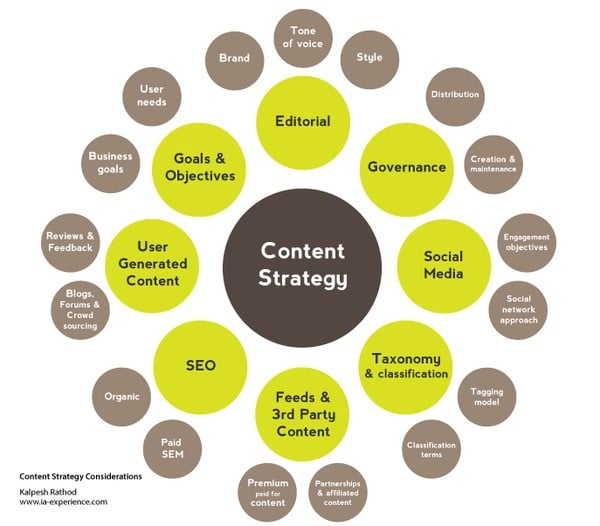
Let’s take a closer look at some tips you can use to make your strategy stronger and able to adjust to new demands.
Content Marketing Tips You Can Use Right Now
In searching for what content marketing is and how to leverage it, it comes down to the execution of your strategy. Maybe you already have one, but it’s been derailed by the pandemic.
As noted, your content marketing strategy must be nimble, no matter what. Most disruptions aren’t foreseeable, but here are some things you can do now to use content marketing to continue to cultivate connections with your audience.
Use LinkedIn to Support Your B2B Content Marketing Strategy
LinkedIn has cemented its position as the social media site for B2B companies (although consumer brands have found success here, too). Its prominence is supported by the fact that 94 percent of B2B marketers use LinkedIn for content marketing.
But how can you more effectively use LinkedIn in your content marketing strategy?
LinkedIn has advantages over other social media sites. Those benefits are just as critical now as they were in 2019, including:
Better Targeting
What’s great about LinkedIn is it’s a place where you can find decision-makers at all levels of a company. You can target based on both job titles and demographics. Of its over 630 million users, LinkedIn even breaks down the levels of influence, enabling you to zero in on those who ultimately drive purchase decisions.
Why does this matter even more now? Because people are still heavily using the site to find answers to new problems – problems they didn’t consider until now. Think of the business that’s now having to transition to a remote workforce. They’ve got lots of concerns, and companies that can offer them technology can be the answer.

Strategy Alignment
Before you begin to try something new on LinkedIn or start at all, you need to ensure that how you use it aligns with your content strategy.
- Why are you using it? Thought leadership, lead generation, building awareness?
- How are you using it to generate traffic? Where do you want them to go?
- How will you interact with customers, partners, and industry experts on the site? And how will this help you meet your content marketing goals?
Optimizing Content Marketing for Ecommerce
Ecommerce retailers are in a new boat now. Even if they had physical locations, the demand for online purchases is now the only channel for most. While it may seem like ecommerce and content marketing aren’t a great match, many online sellers are leveraging it. They’ve found that optimizing content for their ecommerce brand can drive success.
That’s true for B2B ecommerce as well. B2B ecommerce is expected to grow to $1.8 trillion by 2022. Why the growth, which could actually outpace B2C ecommerce?
Much of it has to do with a changing B2B buyer (millennials now account for 73 percent of the B2B buyer group). They are digital natives and enjoy the convenience of buying online and look for content to support their buying decisions.
Additionally, given the improvement in logistics and delivery, it could take less time to get what they need online, instead of visiting a physical location. Now, it’s probably their only option, so it’s time to consider how you can optimize your ecommerce content.
Key things to do for optimization:
- Revisit keywords in your content.
- Emphasize user-generated content (UGC) to plug into your social media profiles to improve your credibility.
- Know your customer and what they expect and create content based on this.
- If it makes sense to adopt new channels and formats, then do so. For example, if the audience you want to engage with is on TikTok, investigate how you can connect with them here.
While it’s good to be experimental in ecommerce content marketing, you don’t want to alienate your audience by trying too hard to leverage new trends as opposed to focusing on the message.
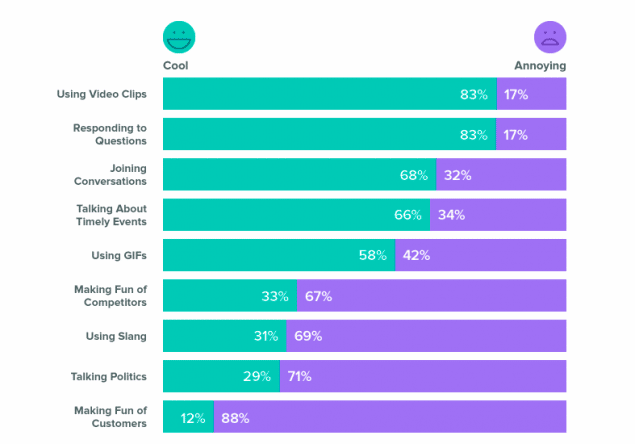
Content Marketing Metrics: What Defines High Performance?
Now that we’ve discussed what content marketing is, it’s time to talk about how you can measure its performance. Once you have a strategy that’s clicking and you’re rolling out high-quality, meaningful content, you should pay attention to these content performance metrics.
Defining Content Marketing KPIs
When defining your key performance indicators (KPIs) for content marketing efforts, it’s different from answering the question of ROI. KPIs focus on the operational side of content marketing. The most important aspect of KPIs is your “why.” Why do you do what you do? That’s what people buy – not what you do.
Some KPIs to consider include:
- Measuring how a content marketing campaign impacts your sales team’s productivity: Does your sales team understand the objectives of the campaign and why it would deliver leads to them? If you have a disconnect here, leads won’t blossom into conversions.
- Understanding the percentage of customers that were marketing-generated: Knowing what new business was won from content marketing shows its influence.
- Time to revenue: How long does a campaign need to generate interest? If the time seems long, you need context (i.e., is your solution’s buying cycle long, have you inserted urgency into your campaign?).
- Customer acquisition costs (CAC): Calculating the CAC for each campaign provides key insights on how to streamline operations to reduce it.
Metrics to Support KPIs and Give You the Real Picture on Performance
After defining KPIs, you should put your attention on these key metrics:
Traffic
Look at users, pageviews, and unique pageviews in Google Analytics.
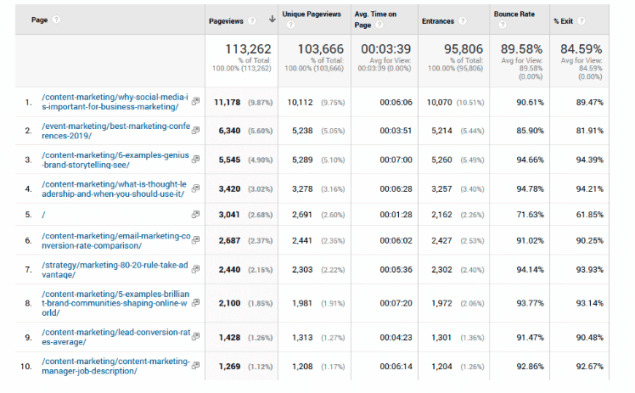
Learn where your traffic is coming from and make changes based on this. For example, if referral traffic is coming from your Pinterest page, you should consider developing more content for the site.
Conversions
Is your content driving conversions? It’s a simple question, but not a linear answer. You can see from traffic that your content is getting more eyes, but what do they do next? Determine how you can link conversions, however you define them, to content to understand its sphere of influence.
Engagement
Traffic is great; engagement is better. Engagement happens when people spend more time on your site and how many pages they view in a visit. Those are all metrics you can find on Google Analytics.
Another element of engagement is what you’re doing on social media. Is your content being reacted to, shared, and commented on? The more this happens, the more it’s likely to drive more credible traffic.
SEO
Organic search rankings are vital to a healthy content marketing strategy. Keywords matter because that’s how your audience looks for answers. You should consistently monitor your keyword performance, including your current position for each keyword you’ve targeted.
Check this at least every 30 days. See where you’re rising and falling and find out why. It’s also imperative to optimize every piece of content, including having correct meta data, as well as a good ratio of keyword to content (how many times you use the keyword in your word count – 3 percent is ideal).
Authority
Authority isn’t easy to measure, compared to the other metrics described. The objective is for your website to have a strong domain authority (DA), which is a number between 1 and 100. The higher the score, the greater the authority.
Building authority improves SEO and conversions and is measured by Google. Google looks at things like backlinks from sites with good DA, as well as how much the content is shared, which Google would consider an illustration of the content’s quality.
Your Questions About Content Marketing Answered
In the course of working with brands across the business landscape, a few questions come up time and time again. What is content marketing? Why is it important? Who should care? What should they do about it.
It reminds me of the classic journalism approach of answering the who? what? when? where? why? and how? questions to get to the bottom of every good story.
So here is my attempt at answering those basic questions.
Why is content marketing important?
Content marketing is important because the world has changed dramatically since we started carrying around all the information on the internet. Add this to our the ability to connect with anyone in the world at any time, with social networks and our mobile phones.
Traditional marketing is broken. 86% of TV ads are skipped. 99.99% of banner ads are ignored. US Newspapers have lost $40 Billion in the last 10 years. Advertising isn’t working for publishers or brands because we have been taught to tune it out.
Brands need a new way to connect with their audience. The approach that is working is the continuous creation of content people want. That’s content marketing.
Who needs to worry about content marketing?
Strategic digital marketers all need to understand the importance of content marketing. They should be able to define it. They should be able to talk about why it’s important in today’s digital + social + mobile world. They should be able to point to good examples of it. They should be able to discuss how to get it done in their organizations.
This starts with the CMO and his or her role in building a culture of content that connects with the target audience. And it falls all the way down to the person building websites, creating social content and building editorial calendars.
What are the biggest mistake marketers make with content marketing?
The biggest mistake marketers make is thinking that this is just another tactic where you can promote yourself. We did that with social. As Linkedin and Facebook and Twitter emerged, brands started pushing out the same old ads they used on more traditional channels. But social networks are just the plumbing. It’s content that fuels social connections. Content that people want to consume and share.
So many marketers think in terms of campaigns and promotions. When their audience is looking for stories – entertainment that makes them smarter, makes them laugh or inspires them in some way. Effective brands are taking themselves out of the story. They make it all about the audience. They don’t talk about themselves or their product but they talk about what they do for their customers. They talk about how we can make the world a better place.
As the mother of content marketing Ann Handley likes to say, they make the customer the hero of the stories they tell.
How can a brand get started with content marketing?
Brands typically get started with because they are seeing their marketing efforts suffer and they are seeing their competitors take leadership positions as publishers in their markets.
Brands should begin by trying to understand who they are trying to reach and how their brand can help that target audience. You should then start to identify the questions your customers are asking, the content they consume and the places where they hang out online. Then, begin to craft a strategy to help the client meet those customers’ needs with content – delivered regularly, across many channels and types.
When should a brand get started with content marketing?
Every business, whatever its size or revenue, needs to get started yesterday. Or they risk losing market share as they lose mind share to their competitors. Or not building up any.
You can get going in as little as 30 days. (I’d be happy to help 😉 Within 90 days you could be a leader on certain topics. Within a year, you could begin to see a return on the investment. Or even sooner depending on how well you execute. Within 3-5 years, the content marketing efforts could become the largest source of value the marketing organization brings to the brand.
What are the common roadblocks to content marketing success?
The common roadblocks to success, besides the fear and lack of courage to change are leadership support from the top.
Content marketing needs to be a CMO-led initiative. He or she needs to put someone in charge and give them the budget and the resources to get it done.
The next thing is usually skills. Training and enablement are one of the key responsibilities of the content marketer because content is created all over the organization.
Finally, brands need the technology to manage the flow of content between their people, and all the channels they manage. This is the only way for content marketing to scale across the enterprise.
How do you overcome the roadblocks?
Strategies to help brands get unstuck include a competitive assessment or to do some social listening to determine if your brand is losing market share where it counts – on the digital, social and mobile web.
Additionally, brands should look at their content inventory and see if it is performing.
Finally, marketers need to shift investment away from the tactics that aren’t working. It’s not to say that advertising will ever go away, but we are seeing many brands shift investment away from their paid advertising and into content marketing.
What are some things that a company needs to do to be successful with content marketing?
The most important component of successful content marketing is a customer-centric culture that seeks to meet the needs of its customers. It is this “higher purpose” that resonates with customers. We are smart enough to see through brands who try to fake a desire to be helpful vs. promotional.
The second thing is the ability to create engaging content that answers your customers’ most important questions. The brands that are able to break through all the clutter and noise in our information-saturated society is not the one with the biggest budget, or the fanciest advertising agency. It is the brand that can create content that captures our attention, on a human level, that wins the hearts and minds of their desired audience.
The third thing is an entrepreneurial spirit. Effective content marketing is constantly iterating many ideas. That is why it must be continuous. Most of the things you try will fail. But every failure provides insights into what works. And this spirit is the foundation for creating break through content that reaches more people than you thought possible. Test. Learn. Optimize.
What does a CMO need to understand about content marketing?
CMOs need to focus on culture. Our CMO Jonathan Becher likes to repeat the line from Peter Drucker that “culture eats strategy for lunch.” Instilling a customer-centric culture is increasingly a matter of survival for firms in this age where consumers block out any messages they don’t want.
From a business case perspective, CMOs need to look across the company and identify all the content that gets created, at considerable cost, and that no one ever uses. Some content marketers have suggested as much as half of the content created inside a company, for customers, never gets viewed, even once. That is considerable cost and inefficiency. And this can support the idea for change.
So content marketing is not an additional expense. It can be funded by eliminating existing waste. And it’s an opportunity to make marketing more efficient overall.
Where will content marketing go from here?
Businesses need to plan for the future. In just a couple of years more, 90% of the web will be video and images. My kids have already resorted to using emojis more than words to communicate. So we need to be ready for entertaining, visual and fun content that can scale.
The future of content marketing is more human interaction. You will see brands tap into their employees to reach out, often through social networks, to customers. You will see brands hiring comedians. You will see more brands creating much more video content, and even sponsoring content more commonly created by entertainment companies.
To set themselves apart, many brands are beginning to build production houses to create entertaining — even funny — content. Imagine that for a B2B brand? But there are already examples at places like Cisco with my good friend Tim Washer, and GE and Red Bull and Netflix and Amazon.
Ready to Reposition Your Brand with Content Marketing?
If you are ready to get more traffic to your site with quality content published consistently, check out our Content Builder Service.
Set up a quick consultation, and I’ll send you a free PDF version of my books. Get started today and generate more traffic and leads for your business!
Editor’s Note: this post was updated with new stats and research on September 14, 2022.

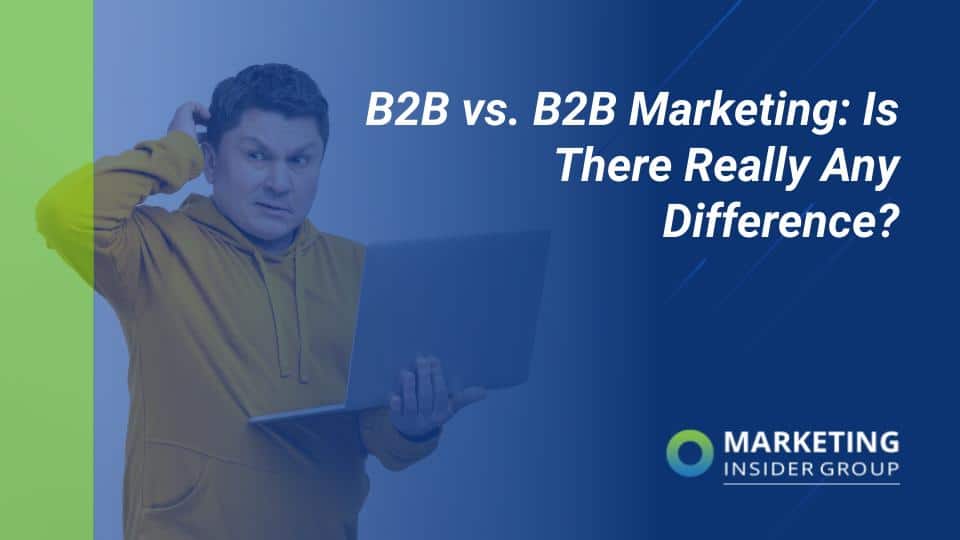
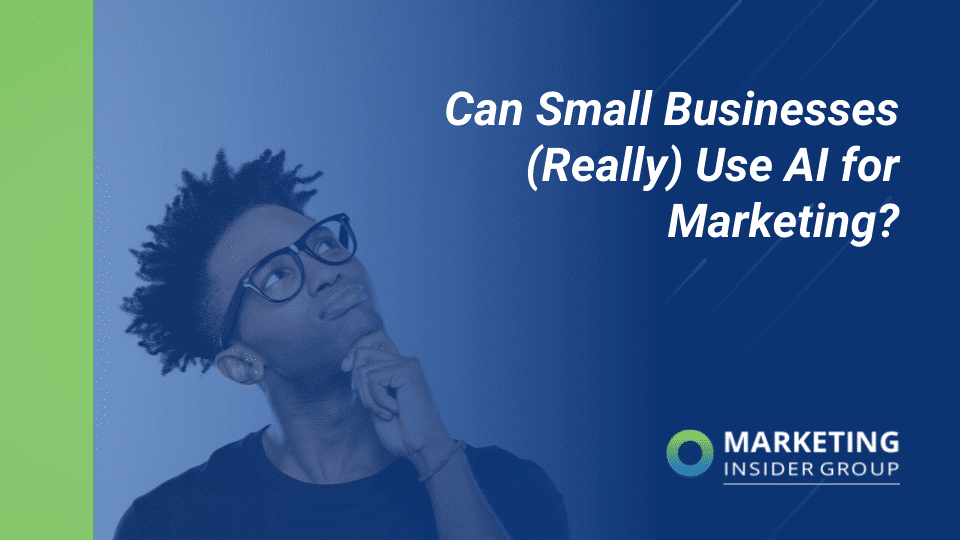




Great reality check, Michael – thanks. And I’m relieved to know that my kids aren’t the only ones who communicate exclusively with emojis, not to mention that specific one pictured.
I love where you recommend people starting . . .
“Brands should begin by trying to understand who they are trying to reach and how their brand can help that target audience.”
I believe if you sincerely and meaningfully do your homework in these two areas, ideas for content will flow. If you have some other agenda like trying to impress peers or are focused primarily on entertaining yourself, you’re gonna have a hard time.
Thank you Michael for reminding me how to express what content marketing is at it’s essence and how to most simply and effectively get the ball rolling.
Thanks Doug! That emoji is the subject of regular conversations and many giggles in my house.
Thanks Lewis, I truly do believe that effective content marketing comes from a serious desire to help the customer. And I agree with you that the content flows from there.
You really make things clear, Mike. You are clearly amazing at what you do. We’ll have to chat sometime soon.
Really inspiring, Michael, thanks.
About your definition of cm – it seems that a really funny, but classic, tv-commercial would fit into that. People likes to laugh…
Well said and I had a good laugh at the examples you posted as well. Content has always has been the primary method for selling products and services online. It’s how you attract new potential leads, how you convince them that you are worth listening to.
Great post Michael. It is crazy that in just a few years, the web will be 90% video and images. It seems like many top companies will be unprepared for this shift. Love this article.
Thank you for the great post, Michael, you are right, content marketing is the new working way to connect the audience.